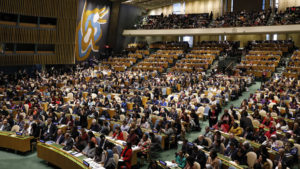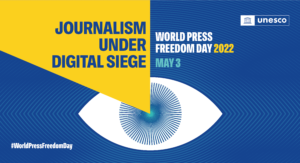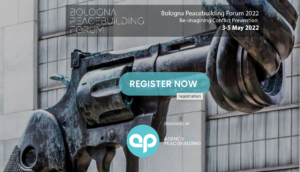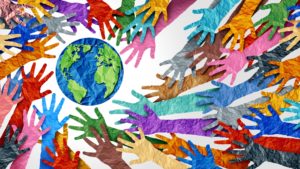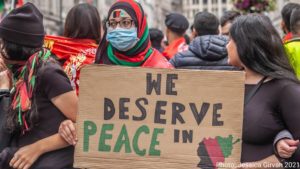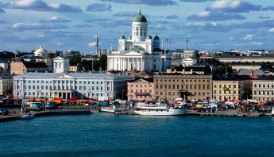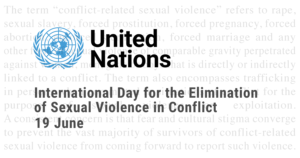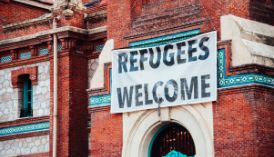This newest piece in our trend content series deals with some of the underlying factors for why women’s inclusion in peace and political transition processes is still lacking and what there is to do about it. Our Associate Director, Sarah Taylor and our Executive Director, Thania Paffenholz take a thorough look at the status of the WPS agenda and what it takes to move it forward.
Thania Paffenholz: Hello Sarah and welcome! It is a pleasure to have you here Sarah, our Director of Women, Peace and Security, currently on leave of absence as Policy Analyst at the the Compact for WPS and Humanitarian Action at UN Women. Today we are talking about women’s inclusion in peace processes and why women’s participation on the one hand seems to be advancing and on the other hand in a certain sense seem stuck. But before we start Sarah, what is in fact the Women, Peace and Security agenda?
Sarah Taylor: Sure, thank you Thania, it is so lovely to have this conversation with you, I can’t wait to see where it goes. Your question is an extremely broad question because the agenda encompasses a great many things – and it has truly evolved over the 21 years since the Security Council first adopted Resolution 1325. When it was adopted, the agenda pulled together efforts around mobilization particularly of women in communities affected by conflict demanding a set of things. Among other things, women should be recognized and supported in their roles and efforts in conflict prevention. The thread through the agenda is of course respect for women’s rights and to bolster the demands, there is this normative policy framework including multiple Security Council resolutions, national action plans etc.
Thania Paffenholz: OK, so to sum up, we are talking about a normative framework that puts the attention to women and girls in various circumstances of conflict; from protection to inclusion in peace processes coming from a rights-based normative approach. As a consequence, we now have people that call themselves WPS practitioners like yourself, so, what is a WPS practitioner? And what are you?
Sarah Taylor: I don’t know what I am!
Thania Paffenholz: Haha, OK, but how do you become a WPS practitioner? What has been your way?
Sarah Taylor: You know, there are multiple ways to be a WPS practitioner. You can think of a WPS practitioner as anybody who is engaged in a subsequent way around issues of conflict and crisis with a gender lens. You can be a women’s protection advisor for the UN working in South Sudan; you can be somebody who is working to facilitate the voices of women and girls in under-the-radar talks in for example Myanmar or you can be a uniformed woman – police or military – in Ukraine for example. You can also work at the policy level – in the UN, in civil society etc. – trying to get policy to be responsive to the particular considerations and concerns in the field. I fall into the latter category with an academic and policy background.
Thania Paffenholz: Thanks! OK, let’s move to the global challenges around women’s participation in peace processes. In short, we have this normative framework in place – but with current global developments, there is a need to protect the gains of the WPS agenda and to avoid that things are moving backwards. Could you explain what you see as the current limiting factors for the advancement of the WPS agenda?
Sarah Taylor: Yeah, it has been a couple of distressing years on multiple fronts. We have the continuation of a global pandemic which has wildly exacerbated not only global inequalities but also access to health care and vaccines. The pandemic has also catalyzed an absolute disaster in terms of violence against women – the incredible rise in the rates of domestic violence is just one example.
And at the same time, we have seen other distressing developments for women’s rights and participation; the coup in Myanmar, the ongoing violence in Ethiopia, the absolute disaster that is Afghanistan, the ongoing unrest and political violence in Sudan, the earthquake and intense political violence in Haiti and then ultimately the situation in Ukraine. And those are just the crises that are hitting the headlines, right? But all of those crises have a gender component to them – in Sudan women continue to be protesting in the streets against the coup, in Ethiopia the UN has repeatedly talked about sexual violence as part of that conflict, in Myanmar, women have fought for years to have their voices heard in efforts around the peace process and in Afghanistan.
All those developments are not heartening. And the major struggle for the international community is the question of what to do in a situation like Afghanistan. I mean, you saw what happened. All of this energy has been put into highlighting women’s rights and then when the Taliban took over, the international community was stuck in terms of what to do other than say to the Taliban: as the Taliban, you need to respect women’s rights. But the response was muddled – you had international delegations of ALL MEN going to talk to the Taliban. You had international organizations telling their women service providers and humanitarian workers: Stay home. Which is NOT the message we want to be sending to the Taliban. So, when it comes to these rapid inflection points, the international community is still really confused about what to do. And unfortunately, it is the women in these communities that pay the price.
Thania Paffenholz: So, globally we have a situation that is not looking great – we have authoritarian backlashes, we have extremists coming into power and setting an example for other extremists and we have an international community that is not doing enough to support women in these crises. Essentially there is, as in Afghanistan, an enormous focus on women’s rights and then in one day – DAFF! – all of the effort is gone. In our work in contexts like Syria and Yemen for example, we see that despite of the fact that the peace processes have been stuck since years and that peace talks are non-existing, the activities for women on the ground are still operating under the illusion that women will be included in the next round of peace talks – talks that are nowhere in sight.
Sarah Taylor: Yes, there is a divorce from the reality of the situation, right?
Thania Paffenholz: Yes, I think that is a good point – and the question is if the international community understands the realities of contemporary conflict? It seems to me that what you are saying is that the WPS agenda and gender issues can’t be separated from the international way of dealing with crises. Is that right?
Sarah Taylor: Yes, definitely. There is a need to recognise what conflict and crisis looks like in other settings and to learn from that. We need to ask ourselves, what can we learn from the way women have engaged as activists, as practitioners in political crises in Latin America? What can we learn from women that are dealing with an existential humanitarian crisis which is climate change and big power confrontation in the Pacific? They are mobilized and they are working! How are both activists, WPS practitioners, states and UN actors grappling with the crises that are not the classic state vs. state conflicts? What can we learn from those situations where we are addressing really complex crises that are long-term and ongoing? Can we take some of those tools and apply them?
Thania Paffenholz: Yes, since World War II, the international community has come up with these frameworks, institutions and mechanisms in order to deal with world peace. In relation to Ukraine for example, you have the OSCE that was basically founded in order to keep Russia in dialogue with the West. The OSCE is still there, but is it functioning? We have a Security Council where Russia is in, but if Russia and the US are in confrontation, we will most likely witness a repeat of the scenery of the eighties where the Security Council was paralyzed. So, there are these tools, institutions and mechanisms, but somehow they are not fit for purpose. That’s on the level of states, but then as you rightly say: There are so many experiences from women groups all over the world that have done so much – and we need to listen to those.
However, the problem is that the world is still operating in a certain way where the states in their manifestations are trying to fix the world and are incapable of it. Then we have the multilateral institutions, such as the UN, which are run by states, and we can’t expect these to fix the situation, because they are an accumulation of states. And then there is civil society trying their best, but the efforts are disconnected.
Sarah Taylor: Yes, one of the things that I always find fascinating is for example the perception of what the Security Council can and cannot do. I mean, pick your multilateral or any regional institution – if the members are states, you are going to have an inevitable diminution in terms of what that multilateral institution will be able to “do”, because it is states with all their political baggage and perspectives coming to the table. And to a certain degree the whole is greater than the sum of its parts, but the degree to which it is greater really varies.
So one of the lessons learned on WPS, for me at least, is: When it comes to a woman who is Head of State or otherwise sits in the halls of power, as much as we would like that to be an immediate lever of change, it is not. We have to accept the realities of what it means to be somebody who progresses into leadership of a specific institution. Male, female, non-binary or other; a leader has a constituency and that constituency is their institution and the values of that institution is what that person is representing. If that institution has gender equality and rights as a priority, then the person that is leading the institution will hold those values and put them forward. But the idea that an individual can be responsible for overturning all of these institutionalized inequalities is just not going to hold.
We need to simultaneously push for female leadership and for institutional change. And then we need to apply this more nuanced perspective to what change looks like. When you for example take a look at advocacy around the mandates for the UN in Afghanistan, the Informal Expert Group or the discussions UAE will be having on WPS the coming month, it becomes clear that there are very concrete ways to shift and move and change the way that the UN body is doing its work. And it has changed, so I think if we are more nuanced in the way that we think about how these institutions can and cannot affect change, we can find avenues for it.
Thania Paffenholz: Yes, fully agree – one should be careful not to overload the idea of women leadership. You can’t just say: You are a woman, fix the situation. Because we know that the systems are so hard to change. But it is also good that you point out that there are spaces within the systems that can be influenced. What we need is responsible leadership be it female or male or whatsoever, and I think that is what we are often still lacking.
But Sarah, if we are to sum this conversation up, it very much shows us that the WPS agenda is NOT a separate agenda. It is part of the context we live in and the context we live in is apparently not the same as the international community seems to handle in the current way of dealing with conflict and crisis. We need more reality based treatment of conflict and crisis situations globally. And then as you rightly say, we need to highlight and get inspired by women and men who have influenced change be it of systems or in daily lives. Thank you very much, Sarah! Do you have any last ideas or words for us?
Sarah Taylor: Well, I think that in many ways the WPS agenda is flawed and we haven’t seen the results that we want, need and deserve. But the WPS agenda remains a useful tool and if we look at the agenda in the same nuanced way that we have just discussed in relation to how the entire international system acts and what realities are, I think we can see a lot of successes from the WPS agenda. We can also see that there is a lot of work still to be done. And I think that the agenda can provide a useful lever if we are conscious about how to use it. One of the things that I think we can definitely do better is to help provide connected tissue between the normative frameworks and how actors and activists in particular situations can use it.
Thania Paffenholz: Yes, that is also what I see. There are successes and then there are backlashes and a lot of things left to do. I think that if we get to what we in this conversation called a reality-based perspective to the crises and conflicts of today – which I call perpetual peacebuilding – then the implication is that the WPS agenda will never be achieved, it is this constant process. There might be achievements, but the agenda will remain something that always will have to be recontextualised and renegotiated depending on the context.
Sarah Taylor: Definitely, it is a continuum, yes, and we have the ability as the international community to help impact that ongoing movement towards change – we have a role and an obligation to affect that.
Thania Paffenholz: Indeed, Sarah, I think we could go on for a while but let’s end it here – thanks a lot for having this conversation with me!
Sarah Taylor: Thank you too!


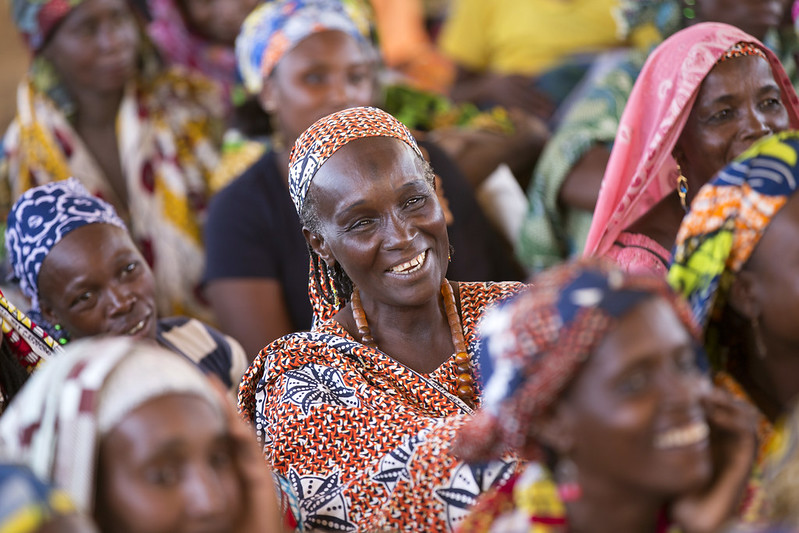
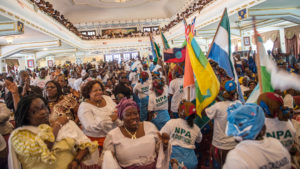 “Celebrate women’s achievements. Raise awareness against bias. Take action for equality.” This year’s international Women’s Day celebration, observed on the 8th of March, sets a clear agenda. With a focus on #BreakTheBias organisers of this year’s observance have partnered with major companies to fight gender inequality by fostering connections and offering entry points for collective action towards empowering women’s work in different industries and creating more visibility. Check out the initiatives
“Celebrate women’s achievements. Raise awareness against bias. Take action for equality.” This year’s international Women’s Day celebration, observed on the 8th of March, sets a clear agenda. With a focus on #BreakTheBias organisers of this year’s observance have partnered with major companies to fight gender inequality by fostering connections and offering entry points for collective action towards empowering women’s work in different industries and creating more visibility. Check out the initiatives 